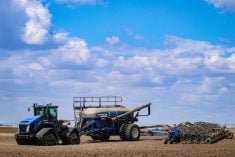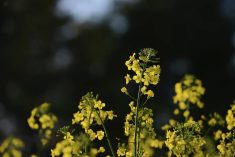Canadian wild rice producers, warehousers and processors interested in exporting to China now have a certification system in place to do so, clearing the way for Chinese market access.
The Canadian Food Inspection Agency on Thursday released details of a new certification program in which the agency can approve Canadian wild rice processing, warehousing and exporting facilities for the Chinese market.
Under the system, recognition of a facility’s CFIA approval must be obtained from China’s Administration of Quality Supervision, Inspection and Quarantine (AQSIQ) before exports can begin from said facility.
Read Also

China to buy 12 million metric tons of soybeans this season, Bessent says
U.S. Treasury Secretary Scott Bessent said on Thursday that China has agreed to buy 12 million metric tons of American soybeans during the current season through January and has committed to buying 25 million tons annually for the next three years as part of a larger trade agreement with Beijing.
CFIA said Thursday it has been working on such a system since 2013-14, at Canadian producers’ request. The agency signed a protocol with AQSIQ in September last year on inspection and quarantine requirements.
Grown mainly in Saskatchewan, Manitoba and northwestern Ontario, Canadian wild rice is produced in shallow waters such as small lakes and slow-flowing streams. The CFIA said Canadian industry estimates project exports worldwide to be worth about $5 million.
Under the new program, CFIA will run evaluations of exporting companies’ systems and conduct annual audits for compliance. The agency also has the right to visit exporters’ facilities “at any time” to sample wild rice for visual inspection, review records and verify compliance.
Processors and exporters storing Canadian wild rice for export are also required to maintain and monitor traps for insect pests. Monitoring data from those traps also has to be kept for auditing and reporting.
Measures also must be in place to prevent wild rice from mildewing, or being mixed with soil particles, plant residues or weed seeds, or being commingled or contaminated with other grains or “impurities,” the agency said.
Processors also must be able to show their wild rice has undergone heat treatment at a temperature between 150 C and 350 C for about two hours and brought to a moisture content between five and eight per cent.
Processed wild rice also must be stored “under hygienic conditions and in new, spill-proof packaging” and internal tracking systems must be in place allowing the wild rice’s origin to be traced back to its grower/supplier, confirming it was produced in Canada. — AGCanada.com Network











